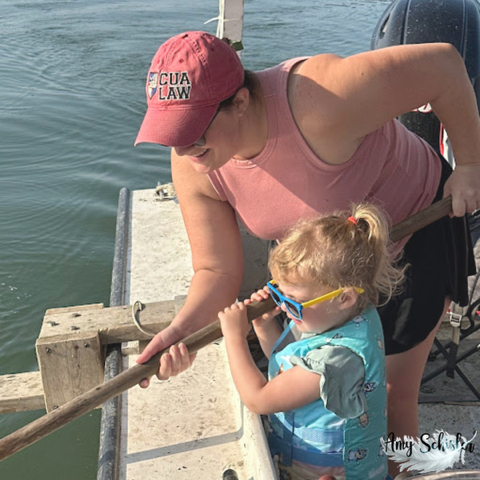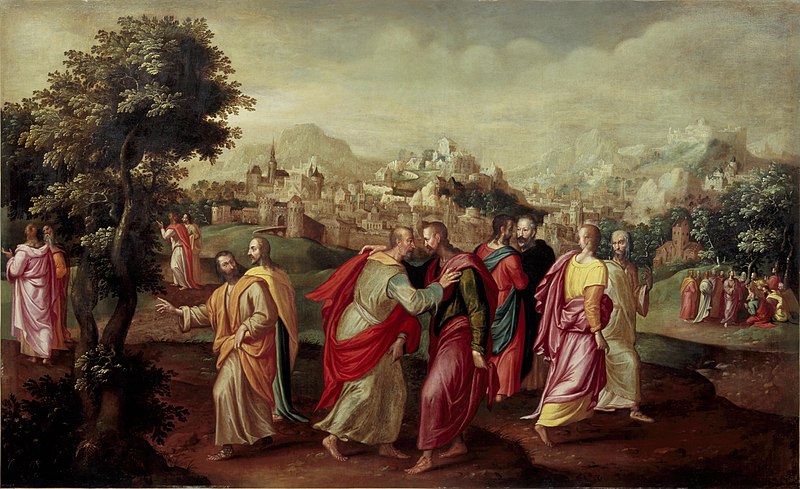What is evangelization?
We Catholic/Christians are asked to ‘evangelize.” But for me, the word, Evangelize, has always been intimidating. And what does that word actually mean? The Merriam-Webster Dictionary says that the word, evangelize, is a verb that means “to preach the gospel to” or “to convert to Christianity.” St. Paul VI said, “Evangelizing means to bring the Good News into all the strata of humanity, and through its influence transforming humanity from within and making it new.”
Are we called to evangelize?
Does the Bible call on us to evangelize? It sure does, and here are two short examples. Matthew 4:19 says, He said to them, “Come after me, and I will make you fishers of men.” Another is in John 20:21: Jesus said to them, “Peace be with you. As the Father has sent me, so I send you.”
Evangelli Gaudium—the new evangelization summons us all
Finally, I will call upon Pope Francis and his Evangelii Gaudium. In this apostolic exhortation, published in 2013, the Holy Father “reaffirmed that the new evangelization is a summons to all the faithful, and is to be carried out in three principal settings.” The three settings are 1) ordinary pastoral ministry (to inflame the hearts of the faithful), 2) outreach to “the baptized whose lives do not reflect the demands of Baptism” and 3) “evangelization to those who do not know Jesus Christ or who have always rejected him.“
First of all, when I think of evangelizers, I envision people such as Billy Graham speaking to a stadium filled with thousands of people or Venerable Fulton Sheen teaching class on television so many years ago. I have even thought of Burt Lancaster playing the character of Elmer Gantry, reigning down words of “fire and brimstone” inside a tent filled with a captive audience. To this very day, we have street preachers praising Jesus and doing their best to convert the unbelievers. As for me, I have never been able to do that.
Do not get me wrong. I have never backed away from a discussion about my faith. If I was in a group or among friends and my Catholic faith was challenged or ridiculed, I would not be quiet. On the contrary, I would defend it the best I could. But I was never one to initiate a conversation. I can still remember my dad telling me, “Never get into a discussion about religion or politics. You can never win.” Well, my dad was wrong. I finally found a way to evangelize. And I want to share it with you.
Evangelizing is not complicated—you just have to be ready for the moment
The first thing I have come to understand is that evangelizing can simply begin as a one-on-one interaction. Since we are all called to evangelize, we have to be ready for the moment. Okay, what does that mean?
First of all, the moment to evangelize is hard to plan. The fact is, the moment can spring up at the most unexpected times or in the strangest of places. You just have to be ready. Here is an example. This happened to me while in line at a supermarket.
There was a young lady in front of me, and she had a child sitting in her cart. The cashier was shaking her head and returning the woman’s debit card to her. The lady slid it back into the scanner. Again it was rejected. A tear ran down the woman’s face. Her child, sensing her mom’s distress, also began to cry. Can you seize this unexpected moment and evangelize? Why not?
The first thing you have to do to be an effective evangelist is smile at people you do not know. Since you are an evangelizer, you have already smiled at both the woman and her child. Okay, she did not want to make new friends—but trust me, she saw your smile. You have also noticed that her grocery cart has about thirty dollars worth of groceries in it. Your moment to begin evangelizing has arrived.
You take your debit card and ask the cashier to put the woman’s charge on your card (I do not do this very often). What do you think might happen? Here are a few examples from personal experience:
A) The lady tells you, “Please mind your own business.”
B) The lady tells you, “No, thank you.” She lifts the child from the cart and leaves the store.
C) The lady gives you a dirty look and says, “That’s not necessary. I have the cash right here.”
D) The lady says, “Thank you,” and accepts your offer.
E) You might have a few expletives thrown your way. You never know.
Paying it Forward
In this case, I am dealing with situation D. You help her save face by saying, “Look, I’m paying it forward. One of these days, you do something for someone else. That’s all there is to it.”
The lady gives you a final “thank you” and begins to leave. I call after her, “Ma’am, can you wait one second? I have something for you.”
She stops and waits while you check out. My moment has arrived. I walk over to her and say, “I was wondering. Do you have Jesus in your life?”
I have thrown it out there, and now I wait. She sighs and looks at me. I sense her nervousness, so I quickly say, “No problem, it’s okay. I just wanted to give you this.”
Evangelizers must choose a primary tool
I have discovered that evangelists need a primary tool in their evangelizing kit. Most evangelists seem to have a Bible in their hand. Not me. I have a cross, a small cross. You cannot see it because it is in my pocket. It is 1.5 X 2.5 inches in size. It is made of olive wood from the Holy Land and is blessed by a priest. I did not invent this idea: I found these crosses online. They are called Comfort Crosses or Caring Crosses. They have turned me into a quiet evangelizer. I love them. (If you want, you can find them online too).
I reach into my pocket, and I pull out the comfort cross. I hold it up between my thumb and forefinger and begin to explain to her what it is. She is just looking at me, but I cannot get a feel for what is going on inside her. I tell her, “Jesus loves you, and this cross will keep you close to Him.”
She is pursing her lips, and I know it is time to finish what I started. I say to her, “Carry it with you in your pocket or purse. Take it to bed with you. Just always keep it close to you. Squeeze it and tell Jesus you love Him. Trust me, you will feel His love returning to you.”
This turned out to be a GOOD moment. A tear rolls down her cheek, and she blurts out, “You have no idea what this means to me. Thank you, thank you.”
The lady takes the cross and, through her tears, smiles. She leaves the store, and I never expect to see her again.
I certainly am no Billy Graham or Venerable Fulton Sheen. But the moments for me to be a one-on-one evangelizer pop up in the strangest places. Supermarkets, gas stations, convenience stores, auto repair shops, doctor’s offices, hospital lobbies, McDonald’s, and Walmart. I have handed out my comfort crosses in all of those places. And, of course, many of my attempts are not appreciated. It is okay. At least I gave it a shot. I figure they threw rocks at Jesus and look what He did for me; the least I can do is try.
I will finish by mentioning the woman I profiled. Almost a year later, I was in the same supermarket. A lady comes up to me and says, “Oh my God, it’s you. I can’t believe it. Remember me?”
I was almost sure I did, but I was not positive. She says, “I’m the person you gave the comfort cross to, and you paid it forward for me. Remember?”
I sure did remember. “Yes, of course. How are you?”
She says, “I have been back to this store four or five times hoping to see you. And finally, here you are. I cannot believe I found you.”
I’m thinking, what does she want? I say, “Wow, I can’t believe it either. So why were you looking for me?”
“Well, I loved the cross you gave me and carried it everywhere. And then I lost it, and I miss it so much. I wanted to find you to see if I could get another one.”
Suddenly I teared up. I reached in my pocket and pulled out two crosses. “Here you go. You now have a spare.”
She gave me the biggest hug I could imagine and thanked me again. It was an evangelizing bonus. You never know what to expect when you evangelize.
One final thought. If you want to evangelize you have to be willing to talk to strangers. Once in a grocery store or a doctor’s office, or a lab for bloodwork, or wherever you may be, the opportunity is usually there. Take a chance—say “Hi” to someone nearby, talk about the weather, or even mention the cold pizza delivered to you. You never know if an “evengelizing moment” is coming your way.
Copyright Larry Peterson 2021










